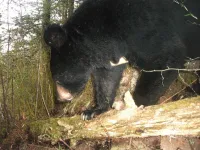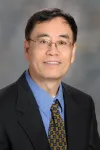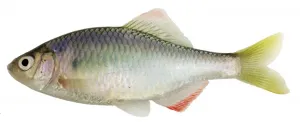Researchers discover a new tool for reconstructing ancient sea ice to study climate change
2021-01-04
(Press-News.org) PROVIDENCE, R.I. [Brown University] -- Sea ice is a critical indicator of changes in the Earth's climate. A new discovery by Brown University researchers could provide scientists a new way to reconstruct sea ice abundance and distribution information from the ancient past, which could aid in understanding human-induced climate change happening now.
In a study published in Nature Communications, the researchers show that an organic molecule often found in high-latitude ocean sediments, known as tetra-unsaturated alkenone (C37:4), is produced by one or more previously unknown species of ice-dwelling algae. As sea ice concentration ebbs and flows, so do the algae associated with it, as well as the molecules they leave behind.
"We've shown that this molecule is a strong proxy for sea ice concentration," said Karen Wang, a Ph.D. student at Brown and lead author of the research. "Looking at the concentration of this molecule in sediments of different ages could allow us to reconstruct sea ice concentration through time."
Other types of alkenone molecules have been used for years as proxies for sea surface temperature. At different temperatures, algae that live on the sea surface make differing amounts of alkenones known as C37:2 and C37:3. Scientists can use the ratios between those two molecules found in sea sediments to estimate past temperature. C37:4 -- the focus of this new study -- had been long considered a bit of problem for temperature measurements. It turns up in sediments taken from closer to the Arctic, throwing off the C37:2/C37:3 ratios.
"That was mostly what the C37:4 alkenone was known for -- throwing off the temperature ratios," said Yongsong Huang, principal investigator of the National Science Foundation-funded project and a professor in Brown's Department of Earth, Environmental and Planetary Science. "Nobody knew where it came from, or whether it was useful for anything. People had some theories, but no one knew for sure."
To figure it out, the researchers studied sediment and sea water samples containing C37:4 taken from icy spots around the Arctic. They used advanced DNA sequencing techniques to identify the organisms present in the samples. That work yielded previously unknown species of algae from the order Isochrysidales. The researchers then cultured those new species in the lab and showed that they were indeed the ones that produced an exceptionally high abundance of C37:4.
The next step was to see whether the molecules left behind by these ice-dwelling algae could be used as a reliable sea ice proxy. To do that, the researchers looked at concentrations of C37:4 in sediment cores from several spots in the Arctic Ocean near the present-day sea ice margins. In the recent past, sea ice in these spots is known to have been highly sensitive to regional temperature variation. That work found that the highest concentrations of C37:4 occurred when climate was coldest and ice was at its peak. The highest concentrations dated back to the Younger-Dryas, a period of very cold and icy conditions that occurred around 12,000 years ago. When climate was at its warmest and ice ebbed, C37:4 was sparse, the research found.
"The correlations we found with this new proxy were far stronger than other markers people use," said Huang, a research fellow at the Institute at Brown for Environment and Society. "No correlation will be perfect because modeling sea ice is a messy process, but this is probably about as strong as you're going to get."
And this new proxy has some additional advantages over others, the researchers say. One other method for reconstructing sea ice involves looking for fossil remains of another kind of algae called diatoms. But that method becomes less reliable further back in time because fossil molecules can degrade. Molecules like C37:4 tend to be more robustly preserved, making them potentially better for reconstructions over deep time than other methods.
The researchers plan to further research these new algae species to better understand how they become embedded in sea ice, and how they produce this alkenone compound. The algae appear to live in brine bubbles and channels inside sea ice, but it may also bloom just after the ice melts. Understanding those dynamics will help the researchers to better calibrate C37:4 as a sea ice proxy.
Ultimately, the researchers hope that the new proxy will enable better understanding of sea ice dynamics through time. That information would improve models of past climate, which would make for better predictions of future climate change.
INFORMATION:
Other coauthors on the study were Markus Majaneva, Simon Belt, Sian Liao, Joseph Novak, Tyler R. Kartzinel, Timothy Herbert, Nora Richter and Patricia Cabedo-Sanz. The work was supported by the National Science Foundation (EAR-1762431).
[Attachments] See images for this press release:

ELSE PRESS RELEASES FROM THIS DATE:
2021-01-04
An emerging type of alloy nanoparticle proves more stable, durable than single-element nanoparticles.
Catalysts are integral to countless aspects of modern society. By speeding up important chemical reactions, catalysts support industrial manufacturing and reduce harmful emissions. They also increase efficiency in chemical processes for applications ranging from batteries and transportation to beer and laundry detergent.
As significant as catalysts are, the way they work is often a mystery to scientists. Understanding catalytic processes can help scientists develop more efficient and cost-effective catalysts. In a recent study, scientists from University of Illinois Chicago (UIC) and the U.S. Department of Energy's ...
2021-01-04
A team working with Roland Fischer, Professor of Inorganic and Metal-Organic Chemistry at the Technical University Munich (TUM) has developed a highly efficient supercapacitor. The basis of the energy storage device is a novel, powerful and also sustainable graphene hybrid material that has comparable performance data to currently utilized batteries.
Usually, energy storage is associated with batteries and accumulators that provide energy for electronic devices. However, in laptops, cameras, cellphones or vehicles, so-called supercapacitors are increasingly installed these days.
Unlike batteries they can quickly store large amounts of energy and put it out just as fast. ...
2021-01-04
Forgive Asiatic black bear if they're not impressed with their popular giant panda neighbors.
For decades, conservationists have preached that panda popularity, and the resulting support for their habitat, automatically benefits other animals in the mountainous ranges. That logic extends across the world, as animals regarded as cute, noble or otherwise appealing drum up support to protect where they live.
Yet in Biological Conservation, scientists take a closer look at how other animals under the panda "umbrella" fare and find several species have every reason to be ticked at panda-centric ...
2021-01-04
HOUSTON -- Researchers at The University of Texas MD Anderson Cancer Center have discovered that a protein called NF-kappa B-inducing kinase (NIK) is essential for the shift in metabolic activity that occurs with T cell activation, making it a critical factor in regulating the anti-tumor immune response.
The preclinical research, published today in Nature Immunology, suggests that elevating NIK activity in T cells may be a promising strategy to enhance the effectiveness of immunotherapy, including adoptive cellular therapies and immune checkpoint blockade.
In a preclinical melanoma model, the researchers evaluated melanoma-specific T cells engineered to express higher levels of NIK. Compared to controls, ...
2021-01-04
HOUSTON -- Researchers from The University of Texas MD Anderson Cancer Center who profiled more than 45,000 individual cells from patients with peritoneal carcinomatosis (PC), a specific form of metastatic gastric cancer, defined the extensive cellular heterogeneity and identified two distinct subtypes correlated with patient survival.
Based on their findings, published today in Nature Medicine, the researchers developed and validated a gene expression signature capable of predicting patient survival better than other clinical features. If validated in prospective studies, this tool may be useful in stratifying ...
2021-01-04
EUGENE, Ore. -- Jan. 4, 2021 -- Phosphorous, calcium and charcoal in spotty patches of fertile soil in the Amazon rainforest suggest that natural processes such as fires and river flooding, not the ingenuity of indigenous populations, created rare sites suitable for agriculture, according to new research.
The presence of pre-Columbian artifacts and signs of plant domestication uncovered in the region's fertile soil, commonly called Amazonian dark earth, had been thought to mean that agricultural practices, including controlled burning, by indigenous people had boosted soil nutrients.
However, radiocarbon dating ...
2021-01-04
What The Study Did: Denmark was one of the first countries to enforce lockdown to reduce the spread of COVID-19 and subsequent gradual reopening, whereas Sweden has had few restrictions, largely limited to public recommendations. Researchers assessed public mobility and social media attention associated with COVID-19 spread and societal interventions from February to June in Denmark and Sweden.
Authors: Isabell Brikell, Ph.D., of the Karolinska Institutet in Stockholm, is the corresponding author.
To access the embargoed study: Visit our For The Media website at ...
2021-01-04
What The Study Did: Researchers used health insurance data from Taiwan to investigate the risk of substance use disorder among patients with autism spectrum disorder and its associations with risk of death.
Authors: Chih-Sung Liang, M.D., of the National Defense Medical Center, and Mu-Hong Chen, M.D., Ph.D., of the Taipei Veterans General Hospital in Taipei, Taiwan, are the corresponding authors.
To access the embargoed study: Visit our For The Media website at this link https://media.jamanetwork.com/
(doi:10.1001/jamapediatrics.2020.5371)
Editor's Note: The article includes funding/support disclosures. Please see the article for additional information, including other authors, author ...
2021-01-04
Bitterling fishes (Subfamily: Acheilognathinae) spawn in the gills of living freshwater mussels obligately depending on the mussels for reproduction. On the Matsuyama Plain, Japan, populations of unionid mussels--Pronodularia japanensis, Nodularia douglasiae, and Sinanodonta lauta--have decreased rapidly over the past 30 years. Simultaneously, the population of a native bitterling fish, Tanakia lanceolata, which depends on the three unionids as a breeding substrate, has decreased. Furthermore, a congeneric bitterling, Tanakia limbata, has been artificially introduced, and hybridisation and genetic introgression occur between them. Here, we surveyed the reproduction and occurrence of hybridisation between native and invasive species ...
2021-01-04
Improving solar cell design is integral for improving energy consumption. Scientists have lately focused on making solar cells more efficient, flexible, and portable to enable their integration into everyday applications. Consequently, novel lightweight and flexible thin film solar cells have been developed. It is, however, not easy to combine efficiency with flexibility. For a material (usually a semiconductor) to be efficient, it must have a small "band gap"--the energy required to excite charge carriers for electrical conduction--and should absorb and convert a large portion of the sunlight into electricity. Till date, no such efficient absorber suitable for thin film solar cells has been developed.
Typically, charge carriers in a semiconductor are ...
LAST 30 PRESS RELEASES:
[Press-News.org] Researchers discover a new tool for reconstructing ancient sea ice to study climate change





